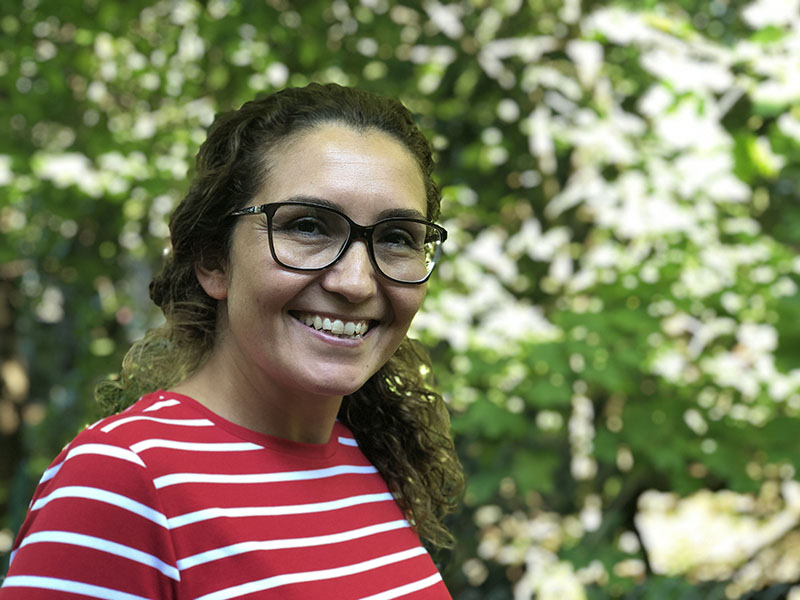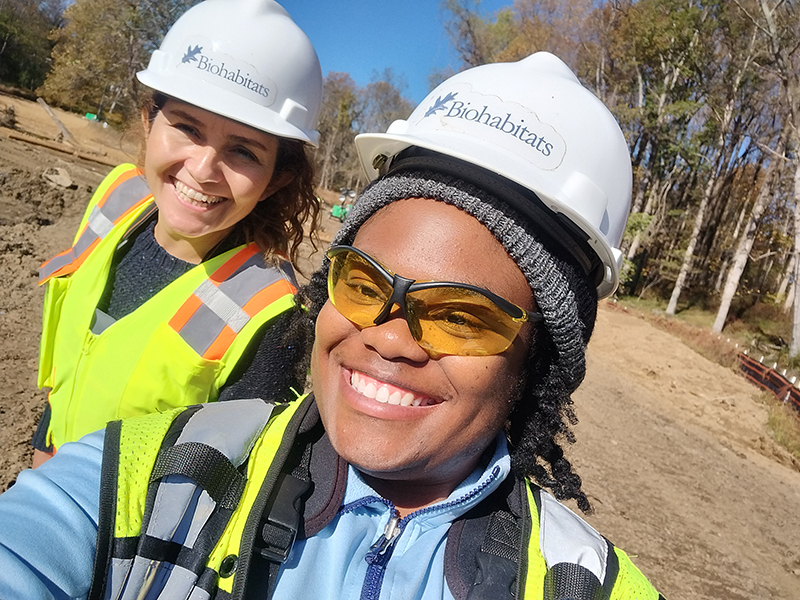Through her undergraduate studies in geography, as well as her travels in Europe and Asia, Turkey native Azade Diykan-Hubbell developed a passion for geographic and cultural structures. Though she had earned a Master’s Degree in Education and had been working as a high school geography teacher in her hometown of Istanbul for several years, she sought to deepen her understanding of landscapes by pursuing an additional Master’s degree in the U.S. Disturbed by the ongoing loss of green space in Istanbul, and recognizing the importance of landscape design for every living species, she chose to pursue a Master’s of Landscape Architecture from Morgan State University in Baltimore, Maryland. Through Biohabitats’ partnership with the University, Azade participated in a multi-disciplinary internship at Biohabitats during the fall of 2022. Throughout her internship, Azade was not only able to advance her research, which is focused on green infrastructure , but also to expand her knowledge of the ecological design process by engaging with Biohabitats team members and participating in the design and monitoring actual project sites. In this post, Azade reflects on her internship experience.

Azade Diykan-Hubbell
I am from Turkey and I studied Geography in my country. I was a teacher but I had a goal to do a master’s program in the U.S. After so many English classes, I am finally a graduate student at Morgan State University. I hope to graduate from the program in the spring of 2023.
This is an interdisciplinary internship, so I had experience with the different departments, not just landscape design. I learned that landscape designing is all about teamwork, and I went on many site field visits with different science-focused departments. For example, I went to the Towson Run streams with water engineers and to Long Branch River with environmental scientists. I learned how to observe information about a site before beginning the designing process, and to incorporate different scientific perspectives.
I knew I would benefit from this interdisciplinary style internship. I designed wetlands, bioretention facilities, and storm planters. I learned from and worked closely with water resource engineers, environmental scientists, and landscape architects. I believe that this collaborative work improved my design, analytical, and visualization skills.

Azade (L) with Biohabitats Environmental Scientist and internship manager, Tanaira Cullens, at a restoration construction site
When starting this internship, one goal I had was to learn more about GIS, which involves searching data and including data on a map. Other goals included learning more about flooding, stormwater management and drainage design. For example, I wanted to learn how to treat stormwater while recharging groundwater and creating wetlands. I also wanted to monitor a couple of parcels of land and compare them with data. The last goal was to improve my AutoCad skills. Some of these goals changed throughout the internship. For example, instead of learning GIS and AutoCad at Biohabitats, which I can learn in my graduate school classes, I decided to use my time designing, monitoring, and researching with people who have so much experience. I achieved almost all of my other goals. My biggest goal was to work with stormwater management and designing wetlands, and I had many opportunities to achieve that.

